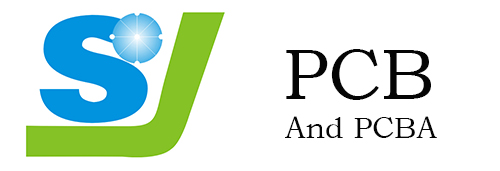Fix the lower layer of copper foil and two layers of prepreg through the alignment hole and the lower iron plate in advance, and then put the prepared core board into the alignment hole. Finally, two layers of prepreg, a layer of copper foil and a layer of pressure-bearing aluminum plate are sequentially covered on the core board.
The PCB board clamped by the iron plate is placed on the bracket, and then sent to the vacuum heat press machine for lamination. The high temperature in the vacuum heat press can melt the epoxy resin in the prepreg and fix the core board and copper foil together under pressure.
After the lamination is completed, remove the upper iron plate that presses the PCB. Then remove the pressure-bearing aluminum plate, which also plays the role of isolating different PCBs and ensuring the smoothness of the copper foil outside the PCB. At this point, both sides of the PCB will be covered with a layer of smooth copper foil.
To connect the four-layer non-contact copper foil in the PCB, first drill through holes from top to bottom to pass through the PCB, and then metallize the hole walls to conduct electricity.
Use an x-ray drill to position the core on the inner layers. The machine will automatically find and locate the hole position on the core board, and then punch a positioning hole on the PCB to ensure that the next drilling will go through the center of the hole position.
Put a layer of aluminum sheet on the punch press and put the PCB on top. In order to improve efficiency, according to the number of PCB layers, stack 1~3 identical PCB boards together and perforate them. Finally, cover the top PCB with an aluminum plate. The upper and lower layers of aluminum plates are used to prevent the copper foil on the PCB from tearing when the drill drills holes.
During the previous lamination process, molten epoxy was squeezed out of the outside of the PCB, so it needed to be cut off. The copy milling machine cuts the PCB periphery according to the correct XY coordinates.
Hole wall thickness
Chemical precipitation of copper on the pore walls
Since almost all PCB designs are lines of different layers connected by vias, a good connection requires 25 microns of copper film on the walls of the holes. The copper film of this thickness needs to be achieved by electroplating, but the hole wall is composed of non-conductive epoxy resin and glass fiber board.
Therefore, the first step is to deposit a layer of conductive material on the hole wall and form a 1 micron copper film on the entire PCB surface (including the hole wall) by chemical deposition. The entire process, such as chemical treatment and cleaning, is controlled by machines.
Fixed PCB
cleaning PCB
Shipping PCBs
Outer layer PCB layout transfer
Next, the PCB layout of the outer layer will be transferred to the copper foil. The process is similar to the previous PCB layout transfer principle of the inner core board. The PCB layout is transferred to the copper foil by using copy film and photosensitive film. The only difference is that the positive will be used as the circuit board.
The internal PCB layout transfer adopts subtraction, and the negative electrode film is used as the plate. The circuit covered by the cured photosensitive film on the PCB is the circuit. Clean uncured photosensitive film. After etching the exposed copper foil, the PCB layout circuit is protected by a cured photosensitive film.
The external PCB layout transfer adopts the conventional method, and the positive film is used as the board. The non-linear area covered by the cured photosensitive film on the PCB is the non-linear area. After cleaning the uncured photosensitive film, it should be plated. Where there is a thin film, it cannot be electroplated. If there is no film, it should be copper plated first, then tin plated. Alkali etching is performed after stripping the film, and finally tin stripping is performed. The circuit diagram stays on the board as it is protected by tin.
Clamp the PCB and plate copper. As mentioned earlier, in order to ensure that the hole has sufficient conductivity, the thickness of the copper film plated on the hole wall must be 25 microns, so the entire system will be automatically controlled by a computer to ensure its accuracy.
PCB etching
External PCB etching
Next, a full automated pipeline completes the etching process. First, clean the cured photosensitive film on the PCB. The excess copper foil covered by it is then cleaned with a strong alkali. Then use tin stripping solution to remove the tin coating on the PCB layout copper foil. After cleaning, the 4-layer PCB layout is completed.



